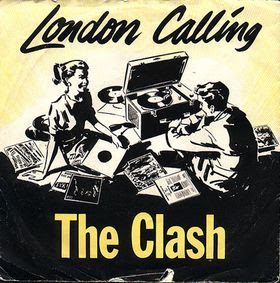
from The Insiders
by Jane Mayer
The New Yorker, 10/27/2008
Upon being elected governor, Palin began developing relationships with Washington insiders, who later championed the idea of putting her on the 2008 ticket. “There’s some political opportunism on her part,” [former Palin aide John] Bitney said. For years, “she’s had D.C. in mind.” He added, “She’s not interested in being on the junior-varsity team.”
During her gubernatorial campaign, Bitney said, he began predicting to Palin that she would make the short list of Republican Vice-Presidential prospects. “She had the biography, I told her, to be a contender,” he recalled. At first, Palin only laughed. But within a few months of being sworn in she and others in her circle noticed that a blogger named Adam Brickley had started a movement to draft her as Vice-President. Palin also learned that a number of prominent conservative pundits would soon be passing through Juneau, on cruises sponsored by right-leaning political magazines. She invited these insiders to the governor’s mansion, and even led some of them on a helicopter tour.
[...]
In February, 2007, Adam Brickley gave himself a mission: he began searching for a running mate for McCain who could halt the momentum of the Democrats. Brickley, a self-described “obsessive” political junkie who recently graduated from the University of Colorado at Colorado Springs, told me that he began by “randomly searching Wikipedia and election sites for Republican women.” Though he generally opposes affirmative action, gender drove his choice. “People were talking about Hillary at the time,” he recalled. Brickley said that he “puzzled over every Republican female politician I knew.” Senator Kay Bailey Hutchison, of Texas, “waffled on social issues”; Senator Olympia Snowe, of Maine, was too moderate. He was running out of options, he recalled, when he said to himself, “What about that lady who just got elected in Alaska?” Online research revealed that she had a strong grassroots following; as Brickley put it, “I hate to use the words ‘cult of personality,’ but she reminded me of Obama.”
Brickley registered a Web site—palinforvp.blogspot.com—which began getting attention in the conservative blogosphere. In the month before Palin was picked by McCain, Brickley said, his Web site was receiving about three thousand hits a day. Support for Palin had spread from one right-of-center Internet site to the next. First, the popular conservative blogger InstaPundit mentioned Brickley’s campaign. Then a site called the American Scene said that Palin was “very appealing”; another, Stop the A.C.L.U., described her as “a great choice.” The traditional conservative media soon got in on the act: The American Spectator embraced Palin, and Rush Limbaugh, the radio host, praised her as “a babe.”
Brickley’s family, once evangelical Christians, now practice what he calls “Messianic Judaism.” They believe that Jesus is the Messiah, but they also observe the Jewish holidays and attend synagogue; as Brickley puts it, “Jesus was Jewish, so to be like Him you need to be Jewish, too.” Brickley said that “the hand of God” played a role in choosing Palin: “The longer I worked on it the less I felt I was driving it. Something else was at work.”
Brickley is an authentic heartland voice, but he is also the product of an effort by wealthy conservative organizations in Washington to train activists. He has attended several workshops sponsored by the Leadership Institute, a group based in the Washington area and founded in 1979 by the Christian conservative activist Morton Blackwell. “I’m building a movement,” Blackwell told me. Brickley also participated in a leadership summit held by Young America’s Foundation (motto: “The Conservative Movement Starts Here”) and was an intern at the Heritage Foundation. He currently lives in a dormitory, on Capitol Hill, run by the Heritage Foundation, and is an intern with townhall.com, a top conservative Web site.
While Brickley and others were spreading the word about Palin on the Internet, Palin was wooing a number of well-connected Washington conservative thinkers. In a stroke of luck, Palin did not have to go to the capital to meet these members of “the permanent political establishment”; they came to Alaska. Shortly after taking office, Palin received two memos from Paulette Simpson, the Alaska Federation of Republican Women leader, noting that two prominent conservative magazines—The Weekly Standard, owned by Rupert Murdoch’s News Corporation, and National Review, founded by William F. Buckley, Jr.—were planning luxury cruises to Alaska in the summer of 2007, which would make stops in Juneau. Writers and editors from these publications had been enlisted to deliver lectures to politically minded vacationers. “The Governor was more than happy to meet these guys,” Joe Balash, a special staff assistant to Palin, recalled.
On June 18, 2007, the first group disembarked in Juneau from the Holland America Line’s M.S. Oosterdam, and went to the governor’s mansion, a white wooden Colonial house with six two-story columns, for lunch. The contingent featured three of The Weekly Standard ’s top writers: William Kristol, the magazine’s Washington-based editor, who is also an Op-Ed columnist for the Times and a regular commentator on “Fox News Sunday”; Fred Barnes, the magazine’s executive editor and the co-host of “The Beltway Boys,” a political talk show on Fox News; and Michael Gerson, the former chief speechwriter for President Bush and a Washington Post columnist.
By all accounts, the luncheon was a high-spirited, informal occasion. Kristol brought his wife and daughter; Gerson brought his wife and two children. Barnes, who brought his sister and his wife, sat on one side of Governor Palin, who presided at the head of the long table in the mansion’s formal dining room; the Kristols sat on the other. Gerson was at the opposite end, as was Palin’s chief of staff at the time, Mike Tibbles, who is now working for Senator Stevens’s reëlection campaign. The menu featured halibut cheeks—the choicest part of the fish. Before the meal, Palin delivered a lengthy grace. Simpson, who was at the luncheon, said, “I told a girlfriend afterwards, ‘That was some grace!’ It really set the tone.” Joe Balash, Palin’s assistant, who was also present, said, “There are not many politicians who will say grace with the conviction of faith she has. It’s a daily part of her life.”
Palin was joined by her lieutenant governor and by Alaska’s attorney general. Also present was a local woman involved in upholding the Juneau school system’s right to suspend a student who had displayed a satirical banner—“Bong Hits 4 Jesus”—across the street from his school. The student had sued the school district, on First Amendment grounds, and, at the time of the lunch, the case was before the Supreme Court. (The school district won.)
During the lunch, everyone was charmed when the Governor’s small daughter Piper popped in to inquire about dessert. Fred Barnes recalled being “struck by how smart Palin was, and how unusually confident. Maybe because she had been a beauty queen, and a star athlete, and succeeded at almost everything she had done.” It didn’t escape his notice, too, that she was “exceptionally pretty.”
According to a former Alaska official who attended the lunch, the visitors wanted to do something “touristy,” so a “flight-seeing” trip was arranged. Their destination was a gold mine in Berners Bay, some forty-five miles north of Juneau. For Palin and several staff members, the state leased two helicopters from a private company, Coastal, for two and a half hours, at a cost of four thousand dollars. (The pundits paid for their own aircraft.) Palin explained that environmentalists had invoked the Clean Water Act to oppose a plan by a mining company, Coeur Alaska, to dump waste from the extraction of gold into a pristine lake in the Tongass National Forest. Palin rejected the environmentalists’ claims. (The Ninth Circuit Court of Appeals ruled against Coeur Alaska, and the dispute is now before the Supreme Court.) Barnes was dazzled by Palin’s handling of the hundred or so mineworkers who gathered to meet the group. “She clearly was not intimidated by crowds—or men!” he said. “She’s got real star quality.”
By the time the Weekly Standard pundits returned to the cruise ship, Paulette Simpson said, “they were very enamored of her.” In July, 2007, Barnes wrote the first major national article spotlighting Palin, titled “The Most Popular Governor,” for The Weekly Standard. Simpson said, “That first article was the result of having lunch.” Bitney agreed: “I don’t think she realized the significance until after it was all over. It got the ball rolling.”
The other journalists who met Palin offered similarly effusive praise: Michael Gerson called her “a mix between Annie Oakley and Joan of Arc.” The most ardent promoter, however, was Kristol, and his enthusiasm became the talk of Alaska’s political circles. According to Simpson, Senator Stevens told her that “Kristol was really pushing Palin” in Washington before McCain picked her. Indeed, as early as June 29th, two months before McCain chose her, Kristol predicted on “Fox News Sunday” that “McCain’s going to put Sarah Palin, the governor of Alaska, on the ticket.” He described her as “fantastic,” saying that she could go one-on-one against Obama in basketball, and possibly siphon off Hillary Clinton’s supporters. He pointed out that she was a “mother of five” and a reformer. “Go for the gold here with Sarah Palin,” he said. The moderator, Chris Wallace, finally had to ask Kristol, “Can we please get off Sarah Palin?”
The next day, however, Kristol was still talking about Palin on Fox. “She could be both an effective Vice-Presidential candidate and an effective President,” he said. “She’s young, energetic.” On a subsequent “Fox News Sunday,” Kristol again pushed Palin when asked whom McCain should pick: “Sarah Palin, whom I’ve only met once but I was awfully impressed by—a genuine reformer, defeated the establishment up there. It would be pretty wild to pick a young female Alaska governor, and I think, you know, McCain might as well go for it.” On July 22nd, again on Fox, Kristol referred to Palin as “my heartthrob.” He declared, “I don’t know if I can make it through the next three months without her on the ticket.” Reached last week, Kristol pointed out that just before McCain picked Palin he had ratcheted back his campaign a little; though he continued to tout her, he also wrote a Times column promoting Senator Joe Lieberman, of Connecticut.
On October 6th, in another Times column, Kristol cryptically acknowledged having been entertained by the Governor. He mentioned meeting Palin “in far more relaxed circumstances, in Alaska over a year ago.” The column featured one of the few interviews that Palin has granted to the national media since becoming McCain’s running mate. Kristol quoted Palin saying that the debate had been a “liberating” experience, then wrote, “Shouldn’t the public get the benefit of another Biden-Palin debate, or even two? If there’s difficulty finding a moderator, I’ll be glad to volunteer.”
On August 1, 2007, a few weeks after the Weekly Standard cruise departed from Juneau, Palin hosted a second boatload of pundits, this time from a cruise featuring associates of National Review. Her guests, arriving on the M.S. Noordam, included Rich Lowry, the magazine’s editor and a syndicated columnist; Robert Bork, the conservative legal scholar and former federal judge; John Bolton, who served as the Bush Administration’s Ambassador to the United Nations from 2004 to 2006; Victor Davis Hanson, a conservative historian who is reportedly a favorite of Vice-President Dick Cheney; and Dick Morris, the ideologically ambidextrous political consultant, who writes a column for The Hill and appears regularly on Fox News.
As Jack Fowler, National Review’s publisher, recalled it, when the guest speakers were invited to come to a special reception at the governor’s mansion, “We said, ‘Sure!’ There’s only so much you can do in Juneau.” The mansion itself, he said, was modest—“not exactly Newport.” But the food was great, and included an impressive spread of salmon. Palin, who circulated nimbly through the room, and spoke admiringly of National Review, made a good impression. Fowler said, “This lady is something special. She connects. She’s genuine. She doesn’t look like what you’d expect. My thought was, Too bad she’s way up there in Alaska, because she has potential, but to make things happen you have to know people.”
Hanson, the historian, recalled Palin in high heels, “walking around this big Victorian house with rough Alaska floors, saying, ‘Hi, I’m Sarah.’ ” She was “striking,” he said. “She has that aura that Clinton, Reagan, and Jack Kennedy had—magnetism that comes through much more strongly when you’re in the same room.” He was delighted that Palin described herself as a fan of history, and as a reader of National Review’s Web site, for which he writes regularly. She spoke about the need to drill for oil in Alaska’s protected wilderness areas, arguing that her husband had worked in nearby oil fields and knew firsthand that it wasn’t environmentally hazardous. Hanson, a farm owner, found it appealing that she was married to an oil worker, rather than to an executive. Bolton, for his part, was pleased that Palin, a hunting enthusiast, was familiar with his efforts to stave off international controls on the global flow of small weapons. She spoke knowledgeably about missile defense, too, he said, and discussed his role, in 2001, in guiding the Bush Administration’s withdrawal from the Anti-Ballistic Missile Treaty. Jay Nordlinger, a senior editor at National Review, had a more elemental response. In an online column, he described Palin as “a former beauty-pageant contestant, and a real honey, too. Am I allowed to say that? Probably not, but too bad.”
According to several accounts, however, no connection made that day was more meaningful than the one struck between Palin and Dick Morris. “He had this very long conversation with her,” Fowler recalled. Lowry laughed in remembering it: “The joke going around was that he was going to take credit for making her.” (Nordlinger’s column went on to say, “Her political career will probably take her beyond Alaska. Dick Morris is only one who thinks so.”)
In fact, in an admiring column published in the Washington Post two days after Palin was chosen, Morris wrote, “I will always remember taking her aside and telling her that she might one day be tapped to be Vice-President, given her record and the shortage of female political talent in the Republican Party. She will make one hell of a candidate, and hats off to McCain for picking her.”
Morris offered Palin some advice during their encounter in Juneau, several of those present recollected, which he shared with the rest of the gathering in a short speech. As Lowry recalled it, Morris had warned her that a reformer, in order to be successful, needed to maintain her “outsider cred.” In a similar vein, Simpson recalled that Morris “gave a little speech” in which he warned that “what happens to most people is that they campaign as outsiders, but when they get into power they turn into insiders. If you want to be successful, you have to stay an outsider.”
Clearly, Palin has taken this advice to heart. Still, when the moment came for Morris and other guests to depart, Palin was sad to see the Washington insiders go. Hanson recalled, “She said, ‘Hey—does anyone want to stay for dinner? We’re going to eat right now.’ She also invited everyone to come back the next day. ‘If any of you are in the area, all you have to do is knock. Yell upstairs, I’ll be right down.’ ”
By the end of February, 2008, the chorus of conservative pundits for Palin was loud enough for the mainstream media to take note. Chris Cillizza, reporting for the Web site of the Washington Post, interviewed Palin and asked her if she’d accept an offer to be McCain’s running mate. Though she dismissed the notion as a virtual “impossibility this go-round,” Palin, who had been in office for only fourteen months, said, “Is it generally something that I would want to consider? Yes.”
By the spring, the McCain campaign had reportedly sent scouts to Alaska to start vetting Palin as a possible running mate. A week or so before McCain named her, however, sources close to the campaign say, McCain was intent on naming his fellow-senator Joe Lieberman, an independent, who left the Democratic Party in 2006. David Keene, the chairman of the American Conservative Union, who is close to a number of McCain’s top aides, told me that “McCain and Lindsey Graham”—the South Carolina senator, who has been McCain’s closest campaign companion—“really wanted Joe.” But Keene believed that “McCain was scared off” in the final days, after warnings from his advisers that choosing Lieberman would ignite a contentious floor fight at the Convention, as social conservatives revolted against Lieberman for being, among other things, pro-choice.
“They took it away from him,” a longtime friend of McCain—who asked not to be identified, since the campaign has declined to discuss its selection process—said of the advisers. “He was furious. He was pissed. It wasn’t what he wanted.” Another friend disputed this, characterizing McCain’s mood as one of “understanding resignation.”
With just days to go before the Convention, the choices were slim. Karl Rove favored McCain’s former rival Mitt Romney, but enough animus lingered from the primaries that McCain rejected the pairing. “I told Romney not to wait by the phone, because ‘he doesn’t like you,’ ” Keene, who favored the choice, said. “With John McCain, all politics is personal.” Other possible choices—such as former Representative Rob Portman, of Ohio, or Governor Tim Pawlenty, of Minnesota—seemed too conventional. They did not transmit McCain’s core message that he was a “maverick.” Finally, McCain’s top aides, including Steve Schmidt and Rick Davis, converged on Palin. Ed Rogers, the chairman of B.G.R., a well-connected, largely Republican lobbying firm, said, “Her criteria kept popping out. She was a governor—that’s good. The shorter the Washington résumé the better. A female is better still. And then there was her story.” He admitted, “There was concern that she was a novice.” In addition to Schmidt and Davis, Charles R. Black, Jr., the lobbyist and political operative who is McCain’s chief campaign adviser, reportedly favored Palin. Keene said, “I’m told that Charlie Black told McCain, ‘If you pick anyone else, you’re going to lose. But if you pick Palin you may win.’ ” (Black did not return calls for comment.) Meanwhile, McCain’s longtime friend said, “Kristol was out there shaking the pom-poms.”
McCain had met Palin once, but their conversation—at a reception during a meeting of the National Governors Association, six months earlier—had lasted only fifteen minutes. “It wasn’t a real conversation,” said the longtime friend, who called the choice of Palin “the fucking most ridiculous thing I’ve ever heard.” Aides arranged a phone call between McCain and Palin, and scrutinized her answers to some seventy items on a questionnaire that she had filled out. But McCain didn’t talk with Palin in person again until the morning of Thursday, August 28th. Palin was flown down to his retreat in Sedona, Arizona, and they spoke for an hour or two. By the time he announced her as his choice, the next day, he had spent less than three hours in her company.
“It certainly was a risk—a risk a lot of people wouldn’t take,” Dan Coats, a former Indiana senator and now a volunteer with the McCain campaign, said. “But that’s what I like about John. There’s a boldness there.”
The thoroughness of the campaign’s vetting process, overseen by the Washington lawyer and former White House counsel Arthur B. Culvahouse, Jr., remains in dispute. The campaign insists that Palin’s record and personal history were carefully examined. (Culvahouse declined to comment for this story.) The Los Angeles Times, however, reported that the campaign never contacted several obvious sources of information on Palin, including Lyda Green—a Republican state senator in Alaska, and a former ally turned opponent. Also in dispute is whether Palin disclosed to the campaign, as she and officials have said, that her unwed teen-age daughter was pregnant. “I am a hundred per cent sure they didn’t know,” McCain’s longtime friend said. Another campaign source, however, insisted that McCain’s team knew about the pregnancy.
[...]
Palin initially provided the McCain campaign with a boost, but polls now suggest that she has become a liability. A top Republican close to the campaign said that McCain’s aides have largely kept faith with Palin. They have been impressed by her work ethic, and by what a quick study she is. According to the Republican close to the campaign, she has sometimes discomfited advisers by travelling with a big family entourage. “It kind of changes the dynamic of a meeting to have them all in the room,” he told me. John McCain’s comfort level with Palin is harder to gauge. In the view of the longtime McCain friend, “John’s personal comfort level is low with everyone right now. He’s angry. But it was his choice.”
(Burning Cane)

 Richard Hell - Dennis Cooper - Ishmael Houston-Jones
Richard Hell - Dennis Cooper - Ishmael Houston-Jones





















































